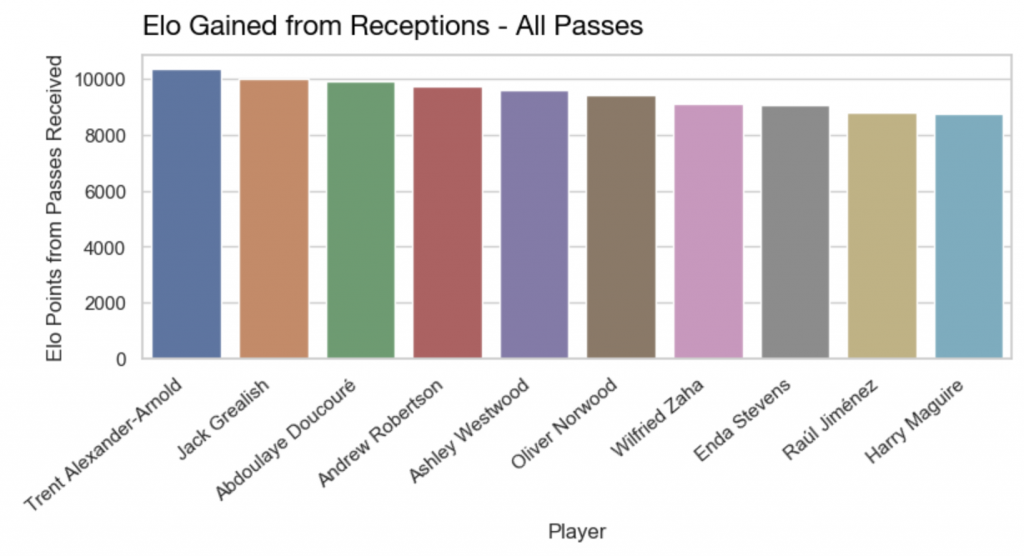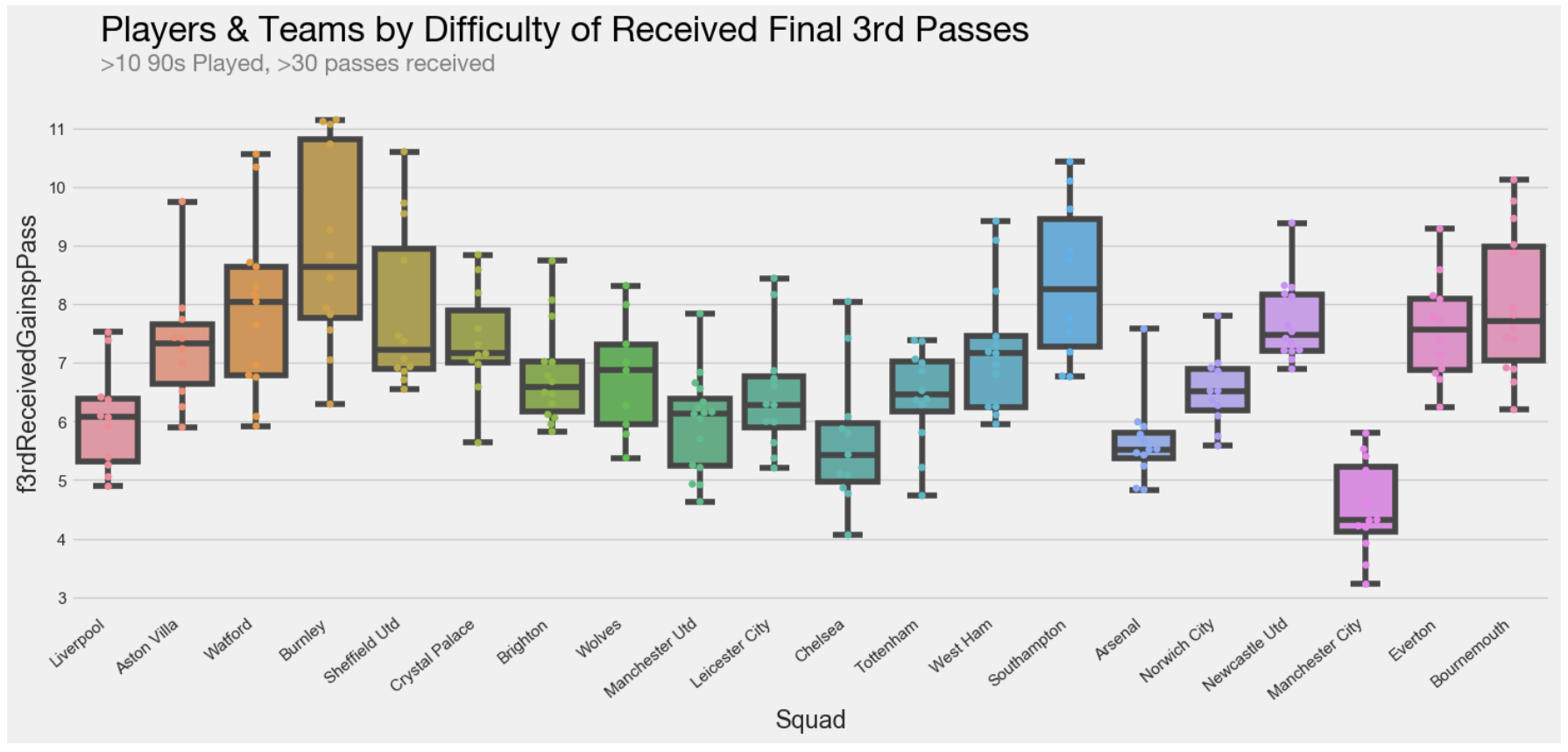Mainstream pass metrics, possession figures and heatmaps usually fail to account for the context and complexity of the individual actions that they count.
In a concept previously introduced here, we are going to use Elo ratings, traditionally used for ranking chess players, to give passes a score that measures their difficulty.
Put simply, if a type of pass is failed often, we can assume that it is difficult and gets a higher rating. Players that complete these difficult passes more often than others will themselves earn a higher rating. Hopefully this gives us extra context when ranking passing ability.
This article, however, will not look at the passers being rewarded for difficult passes. We will instead look at the receivers and see what we can learn from players that regularly find themselves on the end of difficult passes in the Premier League last season.
So we want to find the ‘best’ receivers of the ball.
Knowing that you collect points by completing passes, the simplest question we could ask here is ‘who generated the most Elo points by receiving passes?’

Makes sense, as there are lots of players that we might think of as good options to get the ball to. But it is a bad question for two reasons.
Firstly, these players all played >34 90s, so have more opportunity to get the ball. Secondly, lots of them would have received a high volume of easy passes in safe, low-pressure situations. This is in itself a skill, but not what we are looking to answer here.
Let’s solve the latter issue first by now asking, ‘who generated the most Elo points from final 3rd receptions?’

…and the former by asking this per 90 (min 10 90s)…

Lots of talking points here. The importance of Zaha & Grealish to their teams immediately contrasted with the spread of Liverpool’s trio demonstrating their danger across the front line.
Then when we get to per 90 figures, we have David Silva in a class of his own during his time on the pitch. Followed closely by… Michail Antonio… and then… Shane Long.
How do Sarr & Deulofeu get so high up, considering both their style of play and Watford’s fate last season?
All these observations lead to bigger questions. Which teams rely on influential players the most? And why do players like Antonio and Long rank so highly with this metric?
Profiling Players
Silva and Antonio climb to the top of this passing metric in very different ways.
Plotting the frequency of final 3rd pass receptions and average difficulty of the passes shows that Silva is way ahead of the gang for frequency (and difficulty, compared to teammates). However, Antonio receives the ball far less often but is on the end of more difficult passes. We’ll plot these passes in a bit.

Going past Antonio, we get to a big group of forwards that specialise in receiving difficult – read, long – passes.
Amazingly, 3 Burnley strikers occupy the top spots for average difficulty of passes received. In case any need replacing sharpish, Deeney, McBurnie & Callum Wilson also perform well on this metric.
Let’s take a look at what this looks like in practice. Compare the passes received by Silva & Wood:

To nobody’s surprise, Silva receives plenty of shorter, opposition half passes, compared to the more direct method that Wood finds himself on the end of.
However, I think we get a more useful/applicable plot when we look at where players are receiving the ball from for final third passes.
Across Silva, Wood & Antonio, the profiles are incredibly different. With Silva receiving plenty from already within the final 3rd and Wood & Antonio receiving plenty of crosses and passes from wide, before play has reached the low block.

Comparing Antonio & Wood, their teams look for them very differently. Antonio gets to the ball from very set, wide locations. Burnley utilise Wood (& Barnes/Rodriguez) as an option from just about anywhere on the pitch.


Usage
As for making the contents in this article useful, I think that there are clear applications in profiling final 3rd receivers for recruitment purposes. We can find players that are keen to get the ball often and can work in short-passing systems. Equally, we can find the players with an ability to receive the ball from more direct styles of play.
If it has applications for recruitment, then it should also for opposition scouting. We can look at how teams move the ball to their forwards and who will be the key players in moving the ball into dangerous areas. As a base example, which teams go for higher difficulty passes to enter the final third, and which build up with shorter passes? And from there, dig deeper into who the players are and how they make it happen.

City are in a league of their own for shorter passes – with Arsenal, Chelsea & Liverpool among the closest to them. On the opposite end, note Burnley’s reliance on a few players to take on the hardest passes in the league.
Development
Clearly, we can develop this idea in many ways.
As mentioned in the intro piece, we have just looked at pass locations. Better models might factor in pressures and other pass features. We might also look at carries or team possessions.
Of course, we should also look at different leagues. Here, we have used EPL data for its availability and, perhaps more importantly, the increased number of page views make me feel warm inside. DMs are always open if we can help you and your team with a similar analysis!
Finally, a big thank you to Sean, @thehalfspace, for help with the data and for talking through some of the ideas here.
As ever, let us know what you think about this piece on Twitter, or even just say hello 🤙

